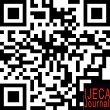Cyber-Physical System and Curriculum Heutagogy Implementation in Higher Education for Creating 4.0 Generation
Abstract
Higher education management must change its management model because the student's current needs in the Industrial Revolution 4.0 era are very diverse and the demand from the industrial world is more specific. This situation required a new approach in learning that can meet the students learning needs, therefore, can generate higher education graduates that have the capability, not competencies. This article is compiled based on the results of thoughts supported by a literature review using content analysis based on the results obtained from 58 articles that were published between 1999 and 2020. The universities can implement heutagogy in the curriculum which is supported by the cyber-physical system in learning. This is causing the students to be able to choose scientific competence they want independently with learning across disciplines for occupying certain ability. The cyber system development in higher education is used to assist the online learning process and as an administrator in supporting learning activities. The cyber-physical system refers to the physical things and the campus atmosphere felt by the students.
Keywords
Full Text:
DOWNLOAD [PDF]References
Agonács, N., & Matos, J. F. (2019). Understanding language MOOC learners: The issue of capability development. International Journal of Emerging Technologies in Learning, 14(11), 123–137. https://doi.org/10.3991/IJET.V14I11.10205
Akram, A., Daud, M. Z., Farzana, R., Joha, M. G. M., & Khan, R. (2016). Structuring Quality Education by Proposing Physical Infrastructure of a Medical School. Education in Medicine Journal, 8(3), 75–87. https://doi.org/10.5959/eimj.v8i3.449
Albert, S., & Grzeda, M. (2015). Reflection in Strategic Management Education. Journal of Management Education, 39(5), 650–669. https://doi.org/10.1177/1052562914564872
Alenezi, A. (2017). Checking on preferential choices of e-learning & learning: A case study of Northern Border University, Saudi Arabia. International Journal of Emerging Technologies in Learning, 12(5), 98–116. https://doi.org/10.3991/ijet.v12i05.6790
Alguliyev, R., Imamverdiyev, Y., & Sukhostat, L. (2018). Cyber-physical systems and their security issues. Computers in Industrial, 100(April), 212–223. https://doi.org/10.1016/j.compind.2018.04.017
Anderson, L., Mason, K., Hibbert, P., & Rivers, C. (2017). Management education in turbulent times. Journal of Management Education, 41(2), 303–306. https://doi.org/10.1177/1052562916682208
Baena, F., Guarin, A., Mora, J., Sauza, J., & Retat, S. (2017). Learning Factory: The Path to Industrial 4.0. Procedia Manufacturing, 9. https://doi.org/10.1016/j.promfg.2017.04.022
Benešová, A., & Tupa, J. (2017). Requirements for Education and Qualification of People in Industrial 4.0. Procedia Manufacturing, 11(June), 2195–2202. https://doi.org/10.1016/j.promfg.2017.07.366
Bhoyrub, J., Hurley, J., Neilson, G. R., Ramsay, M., & Smith, M. (2010). Heutagogy: An alternative practice based learning approach. Nurse Education in Practice, 10(6), 322–326. https://doi.org/10.1016/j.nepr.2010.05.001
Canning, N., & Callan, S. (2010). Heutagogy: Spirals of Reflection to Empower Learners in Higher Education. Reflective Practice, 11(1), 71–82. https://doi.org/10.1080/14623940903500069
Canter, M., & Brumar, C. I. (2011). Transdisciplinary Niches Fostering Lifelong Learning. Procedia - Social and Behavioral Sciences, 28, 636–639. https://doi.org/10.1016/j.sbspro.2011.11.120
Chan, C. K. Y., Fong, E. T. Y., Luk, L. Y. Y., & Ho, R. (2017). A review of literature on challenges in the development and implementation of generic competencies in higher education curriculum. International Journal of Educational Development, 57(August), 1–10. https://doi.org/10.1016/j.ijedudev.2017.08.010
Copaci, I. A., & Rusu, A. S. (2015). A Profile Outline of Higher Education E-Tutoring Programs for the Digital-Native Student – Literature Review. Procedia - Social and Behavioral Sciences, 209(July), 145–153. https://doi.org/10.1016/j.sbspro.2015.11.270
Davis, L., & Hase, S. (1999). Developing capable employees: The work activity briefing. Journal of Workplace Learning, 11(8), 298–303. https://doi.org/10.1108/13665629910300432
Dehghani, M., Pakmehr, H., & Sani, H. J. (2011). Managerial Challenges of Curriculum Implementation in Higher Education. Procedia - Social and Behavioral Sciences, 15, 2003–2006. https://doi.org/10.1016/j.sbspro.2011.04.043
Dixit, S., Mandal, S. N., Thanikal, J. V., & Saurabh, K. (2019). Evolution of studies in construction productivity: A systematic literature review (2006–2017). Ain Shams Engineering Journal, xxxx. https://doi.org/10.1016/j.asej.2018.10.010
Eastwood, J. L., & Sadler, T. D. (2013). Teachers’ implementation of a game-based biotechnology curriculum. Computers and Education, 66, 11–24. https://doi.org/10.1016/j.compedu.2013.02.003
Faqihi, B., Daoudi, N., & Ajhoun, R. (2018). Design of an intelligent educational resource production system. International Journal of Emerging Technologies in Learning, 13(12), 4–18. https://doi.org/10.3991/ijet.v13i12.8914
Fitz, T., Theiler, M., & Smarsly, K. (2019). A metamodel for cyber-physical systems. Advanced Engineering Informatics, 41(December 2018), 100930. https://doi.org/10.1016/j.aei.2019.100930
Graessler, I., & Poehler, A. (2019). Human-centric design of cyber-physical production systems. Procedia CIRP, 84, 251–256. https://doi.org/10.1016/j.procir.2019.04.199
Hase, S, & Kenyon, C. (2001). Moving from Andragogy to Heutagogy: Implications for VET. Proceedings of Research to Reality: Putting VET Research to Work, January 2001, 1–8.
Hase, Stewart. (2012). Heutagogy and e-learning in the workplace: some challenges and opportunities. Journal of Applied Research in Workplace E-Learning, 1(1), 8. https://doi.org/10.5043/impact.13
Hase, Stewart, & Kenyon, C. (2007). Semantic Play and Possibility Invited Contribution Heutagogy: A Child of Complexity Theory. An International Journal of Complexity and Education, 4(1), 111–118. www.complexityandeducation.ca
Henshaw, M., & Deka, L. (2018). Transportation Cyber-Physical System as a Specialised Education Stream. In Transportation Cyber-Physical Systems. Elsevier Inc. https://doi.org/10.1016/b978-0-12-814295-0.00009-5
Jensen, J. C., Lee, E., & Seshia, S. (2013). Virtualizing Cyber-Physical Systems: Bringing CPS to Online Education. Proc. First Workshop on CPS Education (CPS-Ed), 1–5. http://scholar.google.com/scholar?q=Virtualizing Cyber-Physical Systems: Bringing CPS to Online Education&btnG=&hl=en&num=20&as_sdt=0%2C22 VN - readcube.com
Joshua Earnest, Fr. Francis E. de Melo, S. . (2011). Competency-Based Engineering Curricula – an Innovative Approach. International Conference on Engineering Education, 1–18. http://www.ineer.org/Events/ICEE2001/Proceedings/papers/439.pdf
Lafuente-Ruiz-de-Sabando, A., Zorrilla, P., & Forcada, J. (2018). A Review of Higher Education Image and Reputation Literature: Knowledge Gaps and A Research Agenda. European Research on Management and Business Economics, 24(1), 8–16. https://doi.org/10.1016/j.iedeen.2017.06.005
Lasi, H., Fettke, P., Kemper, H. G., Feld, T., & Hoffmann, M. (2014). Industrial 4.0. Business and Information Systems Engineering, 6(4), 239–242. https://doi.org/10.1007/s12599-014-0334-4
Lawlor, O., Moss, M., Kibler, S., Carson, C., Bond, S., & Bogosyan, S. (2013). Search and rescue robots for integrated research and education in Cyber-Physical Systems. Proceedings - 2013 7th IEEE International Conference on e-Learning in Industrial Electronics, ICELIE 2013, 92–97. https://doi.org/10.1109/ICELIE.2013.6701279
Lim, C. L., Jaya, S., Jalil, H. A., & Saad, W. Z. (2020). Peer Learning , Self-Regulated Learning and Academic Achievement in Blended Learning Courses : A Structural Equation Modeling Approach. International Journal of Emerging Technologies in Learning, 15(3), 110–125.
Liu, Y., Deng, L., Gao, N., & Sun, X. (2019). A reliability assessment method of cyber physical distribution system. Energy Procedia, 158, 2915–2921. https://doi.org/10.1016/j.egypro.2019.01.951
Lund Dean, K., & Fornaciari, C. J. (2014). The 21st-Century Syllabus: Tips for Putting Andragogy Into Practice. Journal of Management Education, 38(5), 724–732. https://doi.org/10.1177/1052562913504764
Mohammad, S., Siang, T. C., Osman, S., Jamaluddin, N. Y., Alfu, N. A. M., & Huei, L. Y. (2019). A proposed heutagogy framework for structural steel design in civil engineering curriculum. International Journal of Emerging Technologies in Learning, 14(24), 96–105. https://doi.org/10.3991/ijet.v14i24.12091
Motyl, B., Baronio, G., Uberti, S., Speranza, D., & Filippi, S. (2017). How will Change the Future Engineers’ Skills in the Industrial 4.0 Framework? A Questionnaire Survey. Procedia Manufacturing, 11(June), 1501–1509. https://doi.org/10.1016/j.promfg.2017.07.282
Mourtzis, D., Vlachou, E., Dimitrakopoulos, G., & Zogopoulos, V. (2018a). Cyber- Physical Systems and Education 4.0 -The Teaching Factory 4.0 Concept. Procedia Manufacturing, 23(2017), 129–134. https://doi.org/10.1016/j.promfg.2018.04.005
Mourtzis, D., Vlachou, E., Dimitrakopoulos, G., & Zogopoulos, V. (2018b). Cyber- Physical Systems and Education 4.0 -The Teaching Factory 4.0 Concept. Procedia Manufacturing, 23(2017), 129–134. https://doi.org/10.1016/j.promfg.2018.04.005
National Academies of Sciences, Engineering, and M. 2016. (2016). A 21st Century Cyber-Physical Systems Education. In The National Academies Press. THE NATIONAL ACADEMIES PRESS. https://doi.org/10.17226/23686
Oks, S. J., Jalowski, M., Fritzsche, A., & Möslein, K. M. (2019). Cyber-physical modeling and simulation: A reference architecture for designing demonstrators for industrial cyber-physical systems. Procedia CIRP, 84, 257–264. https://doi.org/10.1016/j.procir.2019.04.239
Ozruso-Haggiag, S. G., & Tabach, M. (2018). Between the implemented and the attained curriculum: The case of strategies for solving linear equations. International Journal of Educational Research, 92(July), 98–109. https://doi.org/10.1016/j.ijer.2018.09.003
Pereira, A. C., & Romero, F. (2017). A review of the meanings and the implications of the Industrial 4.0 concept. Procedia Manufacturing, 13, 1206–1214. https://doi.org/10.1016/j.promfg.2017.09.032
Rauch, E., Linder, C., & Dallasega, P. (2019). Anthropocentric perspective of production before and within Industrial 4.0. Computers and Industrial Engineering, xxx(xxxx), 1–15. https://doi.org/10.1016/j.cie.2019.01.018
Rauen, T. R. S., Lezana, Á. G. R., & da Silva, V. (2015). Environmental Management: An Overview in Higher Education Institutions. Procedia Manufacturing, 3(Ahfe), 3682–3688. https://doi.org/10.1016/j.promfg.2015.07.785
Rohayani, A. H. H., Kurniabudi, & Sharipuddin. (2015). A Literature Review: Readiness Factors to Measuring e-Learning Readiness in Higher Education. Procedia Computer Science, 59(Iccsci), 230–234. https://doi.org/10.1016/j.procs.2015.07.564
Santos, C., Mehrsai, A., Barros, A. C., Araújo, M., & Ares, E. (2017). Towards Industrial 4.0: an overview of European strategic roadmaps. Procedia Manufacturing, 13. https://doi.org/10.1016/j.promfg.2017.09.093
Shubina, I., & Kulakli, A. (2019). Pervasive learning and technology usage for creativity development in education. International Journal of Emerging Technologies in Learning, 14(1), 95–109. https://doi.org/10.3991/ijet.v14i01.9067
Singh, I., Centea, D., & Elbestawi, M. (2019). IoT, IIoT and Cyber-Physical Systems Integration in the SEPT Learning Factory. Procedia Manufacturing, 31, 116–122. https://doi.org/10.1016/j.promfg.2019.03.019
Talati, J. J. (2014). Lifelong Learning: Established Concepts and Evolving Values. Arab Journal of Urology, 12(1), 86–95. https://doi.org/10.1016/j.aju.2013.11.001
Tanganelli, G., Cassano, L., Miele, A., & Vallati, C. (2020). A Methodology for the Design and Deployment of Distributed Cyber-Physical Systems for Smart Environments. Future Generation Computer Systems. https://doi.org/10.1016/j.future.2020.02.047
Törngren, M., Grimheden, M. E., Gustafsson, J., & Birk, W. (2016). Strategies and considerations in shaping Cyber-Physical Systems education. ACM SIGBED Review, 14(1), 53–60. https://doi.org/10.1145/2829957.2829965
Tvenge, N., & Martinsen, K. (2018). Integration of digital learning in industrial 4.0. Procedia Manufacturing, 23(2017), 261–266. https://doi.org/10.1016/j.promfg.2018.04.027
Twizeyimana, J. D., & Andersson, A. (2019). The public value of E-Government – A literature review. Government Information Quarterly, June 2017, 1–12. https://doi.org/10.1016/J.GIQ.2019.01.001
Uhlemann, T. H. J., Lehmann, C., & Steinhilper, R. (2017). The Digital Twin: Realizing the Cyber-Physical Production System for Industrial 4.0. Procedia CIRP, 61, 335–340. https://doi.org/10.1016/j.procir.2016.11.152
Wahab, N. A., & Mustapha, R. (2015). Reflections on Pedagogical and Curriculum Implementation at Orang Asli Schools in Pahang. Procedia - Social and Behavioral Sciences, 172, 442–448. https://doi.org/10.1016/j.sbspro.2015.01.376
Wilson, J. A., Pegram, A. H., Battise, D. M., & Robinson, A. M. (2017). Traditional Lecture Versus Jigsaw Learning Method For Teaching Medication Therapy Management (MTM) Core Elements. Currents in Pharmacy Teaching and Learning, 9(6), 1151–1159. https://doi.org/10.1016/j.cptl.2017.07.028
Zevin, B., Sheahan, G., Ashamalla, S., Dedy, N. J., Jalink, D., & Grantcharov, T. (2019). Implementation and Evaluation of a Comprehensive Proficiency-Based Curriculum in an Advanced, Minimally Invasive Procedure: A Multi-Institutional Canadian Experience. Surgery for Obesity and Related Diseases, 15(11), 1956–1964. https://doi.org/10.1016/j.soard.2019.09.053
Zezulka, F., Marcon, P., Vesely, I., & Sajdl, O. (2016). Industrial 4.0 – An Introduction in the phenomenon. IFAC-PapersOnLine, 49(25). https://doi.org/10.1016/j.ifacol.2016.12.002
Zhong, R. Y., Xu, X., Klotz, E., & Newman, S. T. (2017). Intelligent Manufacturing in the Context of Industrial 4.0: A Review. Engineering, 3(5), 616–630. https://doi.org/10.1016/J.ENG.2017.05.015
Zhou, K., Liu, T., & Zhou, L. (2016). Industrial 4.0: Towards future industrial opportunities and challenges. 2015 12th International Conference on Fuzzy Systems and Knowledge Discovery, FSKD 2015. https://doi.org/10.1109/FSKD.2015.7382284
DOI: https://doi.org/10.31764/ijeca.v5i1.7971
Refbacks
- There are currently no refbacks.
Copyright (c) 2022 Hendro Prasetyono, Ira Pratiwi Ramdayana, Laila Desnaranti

This work is licensed under a Creative Commons Attribution-ShareAlike 4.0 International License.
IJECA (International Journal of Education and Curriculum Application) already indexed:










___________________________________________________________________
| |
____________________________________________________________________
IJECA Publisher Office:







.jpg)




